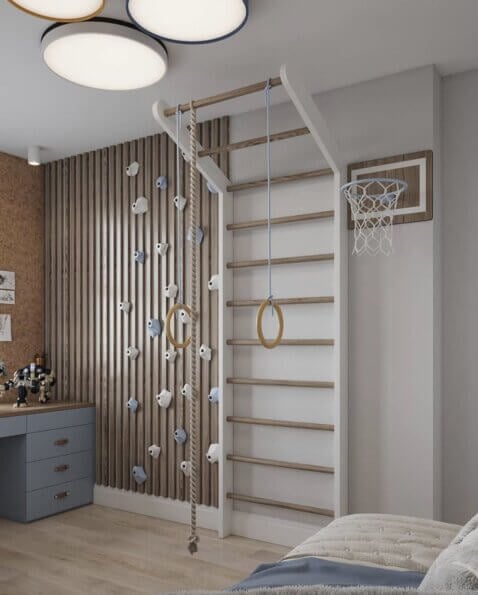
How to create a “movement room” in your home
Every room provides opportunities for our kids to move their bodies—from jumping on the bed to building giant couch-cushion forts. But sometimes we want our beds to be made and our couches to be used for sitting. That’s when it’s nice to have a dedicated movement space.
Luckily, with a few supplies and a bit of imagination, it’s easy to create a “movement room” or space in the house where kids can move freely without worrying about knocking a glass off the counter or breaking something.
With these tweaks, your kids won’t be able to resist getting active (and you’ll be able to stop saying ‘be careful!’ every time they get a burst of energy).
Step 1: Clear a space
Maybe it’s a corner of your living room, or maybe it’s in your kid’s room. Whatever the case, choose the space and make sure it’s empty (you don’t need to empty the room—just the portion of the room that will be the designated “movement space”). Make sure you’re realistic when choosing the space. If your kids don’t often go to the basement to play on their own, choose an area they’ll actually want to use. Often, our kids want to play near us or want us to be involved in the movement—so this is a chance to think of the ways you like to move your body too.

Step 2: Think about your kid’s unique interests and abilities
Is your child an acrobat? Add rings to swing from. Here’s a great example from Pinterest for some inspiration! If they’re more of a “throw your body into a pile of cushions” type, lots of blankets and pillows are the most essential. If they get lost in building giant structures for hours, giant Mondo Bloxx will provide gross motor building opportunities. A movement space should reflect the reality of your unique children, rather than a one-size-fits-all approach.
Step 3: Create a landing
Whether you grab some play mats from IKEA, or pad the floor with pillows, make sure there is a soft place to jump, land, or tumble around. If your kid is more interested in cartwheels and handstands, a yoga mat (there are some adorable ones for kids out there!) is likely the best option.
Step 4: Add props
Once you’ve dreamed up your ideal space, start adding to it. In our house, we have a very small space to work with. My yoga mat, which rolls away easily, gets a lot of play, as we all like to practice handstands and downward dogs. Our ideal movement space includes climbing holds anchored into the wall, which take up no space but are ideal for little climbers. River stones are on our to-buy list, as they nest together for easy storage, and a great option for balance and jumping (and perfect for “The Floor is Lava,” which is always a blast.) Other props to consider: a ninja line, a wobbel board, a doorway swing, and a mini trampoline.
Step 5: Have fun!
Moving together as a family can boost feel-good endorphins and be a positive bonding experience. And when parents aren’t available to join in, a movement space can be a saving grace for busy parents with high-energy kiddos.





